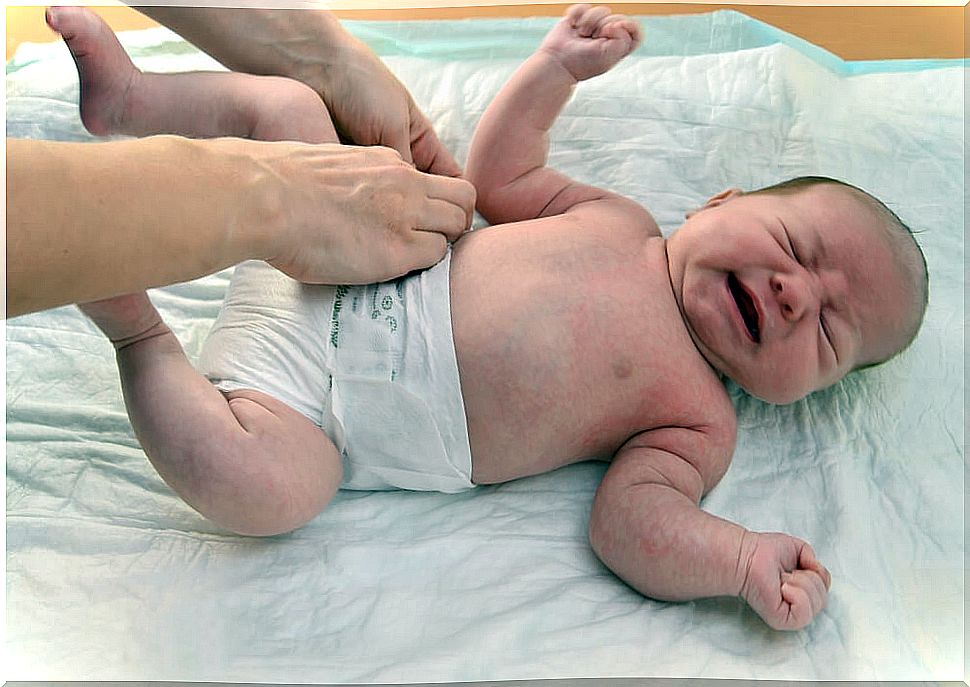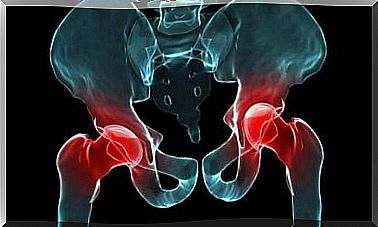Why Should We Avoid Lowering The Skin Of The Penis Of Babies?
When you have a male baby, a question always arises: lower the skin of the penis, circumcise or let the preputial adhesions evolve naturally?

When you have a male baby, you have to face different positions on a crucial issue: lowering the skin of the penis. Among pediatricians there are several positions : those who consider it necessary to lower this delicate skin in a single pull and those who consider that it must be done delicately, little by little.
Likewise, among mothers who already have male children there are two ways of approaching this issue, those who consider that the foreskin must be lowered and those who decide to wait for it to occur naturally. There are also those who resolve the issue with a newborn circumcision.
For any mother, whether new or having a male child for the first time, this is a cause for concern given how different opinions are between mothers and doctors.
Baby’s penis
The glans is protected by the skin of the foreskin. In the newborn, the foreskin is attached to the glans and cannot be removed. This is normal and is called “preputial adhesions.” And as the baby grows, the foreskin separates and leaves the glans exposed, as this study published in the Cuban Journal of Urology points out .

Preputial adhesions form between the skin of the foreskin and the mucosa of the glans. These adhesions prevent the skin from coming down and it seems that the baby has phimosis, a common disease of the penis that narrows the opening of the foreskin and prevents the glans from being discovered.
But in a baby it is quite hasty to talk about having a disease. In this sense, preputial adhesions are only a defense mechanism of the body to protect the penis from infections. If they are allowed to evolve, most of them end up disappearing between 3 and 4 years of age, as evidenced by this article published in the Chilean Journal of Pediatrics .
Lower the skin of the penis or not lower it
Until very recently, pediatricians recommended lowering the skin of the penis with a rapid, one-time dilation, when the baby was between 3 or 4 months. Some refer the baby to a urologist to have the professional perform the procedure.
With a little local anesthesia, the doctor makes a forced dilation of the foreskin. However, it is painful for the baby. It is an abrupt maneuver that causes bleeding and can cause a greater tightness once the resulting wound heals.

Currently, pediatricians recommend lowering the skin of the penis very gently during bath time. There are very few cases of children who reach 3 years of age without the adhesions having spontaneously disappeared.
In such cases, the pediatrician or urologist teaches the parents to perform the maneuver gently to lower the skin of the penis with an ointment or cream with corticosteroids, as indicated in this information from the Spanish Association of Pediatrics and Primary Care. If you are found to have phimosis, you will need to be circumcised.
Respect the baby’s times
At birth, it is normal for the foreskin to be attached to the glans. In very rare cases, the skin of the penis retracts from birth. On the other hand, it is rare that babies have to wait until 5 years for the preputial adhesions to completely disappear.
When the baby’s diaper is removed, at approximately 2 years of age, it is normal for him to begin to explore his body more. For this reason, it is common for him to try to lower the skin of the penis, which, as the child develops, becomes increasingly thin and flexible.

The preputial adhesions give way with the touch during the baby’s self-examination until, in the end, they go down with total ease.
If your pediatrician is one of those who considers that this skin should be removed from the glans as soon as possible, you should be clear that it is a painful procedure for your baby, with doubtful results.
When it comes to lowering the skin of the penis in babies …
In short, letting yourself be carried away by specialist opinion is common, especially among new moms. The opinion of the doctor is highly valued and that undoubtedly pays off. But it is also important that you are well informed about what are the best procedures and what natural processes are like.
Take your time to consider what the different options are in relation to adhesions. And, if you need to consult with another specialist, do not hesitate to do so.
Around 5 or 6 years, if the skin of the foreskin does not go down, surgery can be used. So, depending on how the phimosis is, you can wait up to 14 years to get circumcised. Therefore, do not rush when making a decision.









